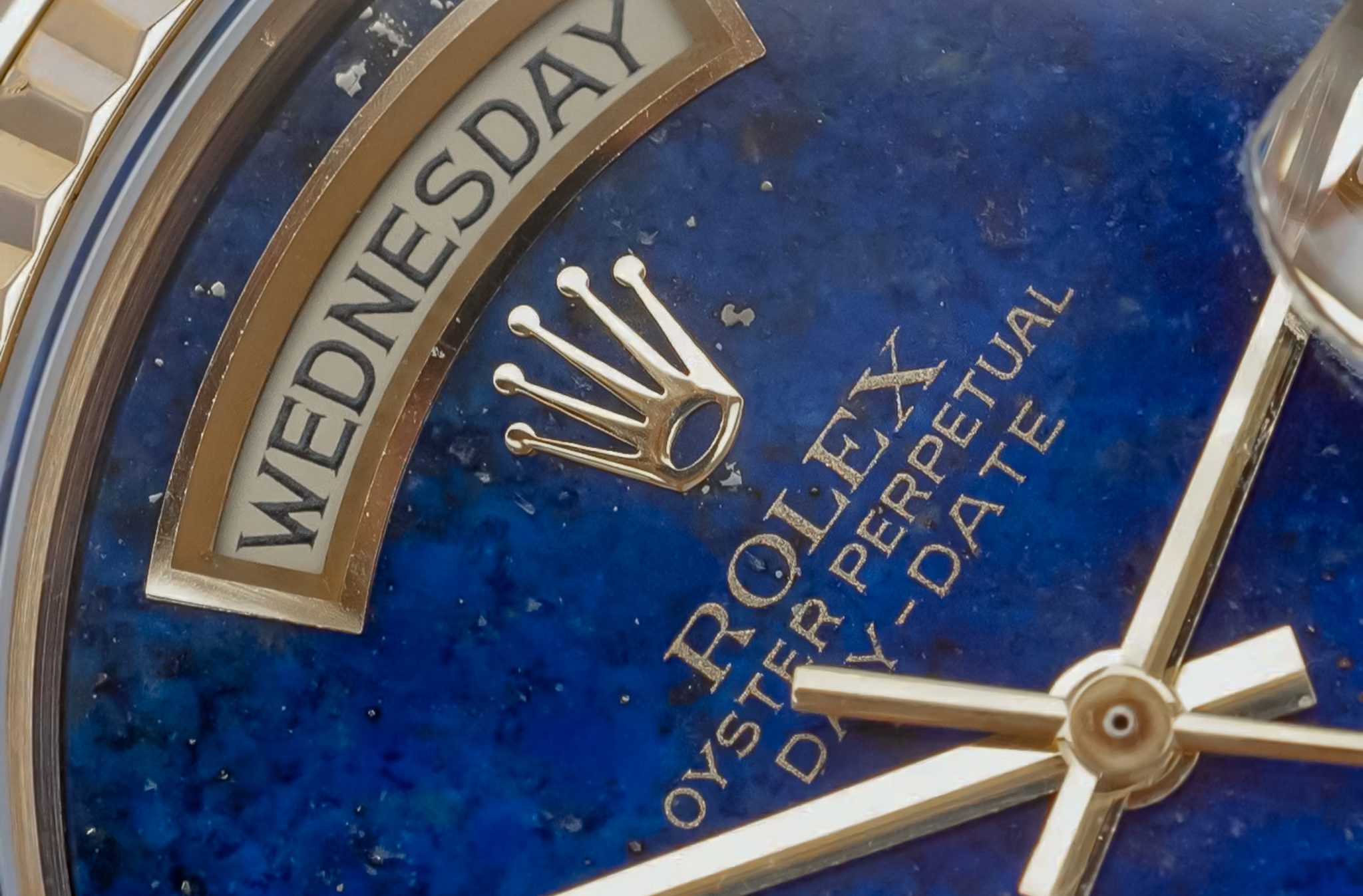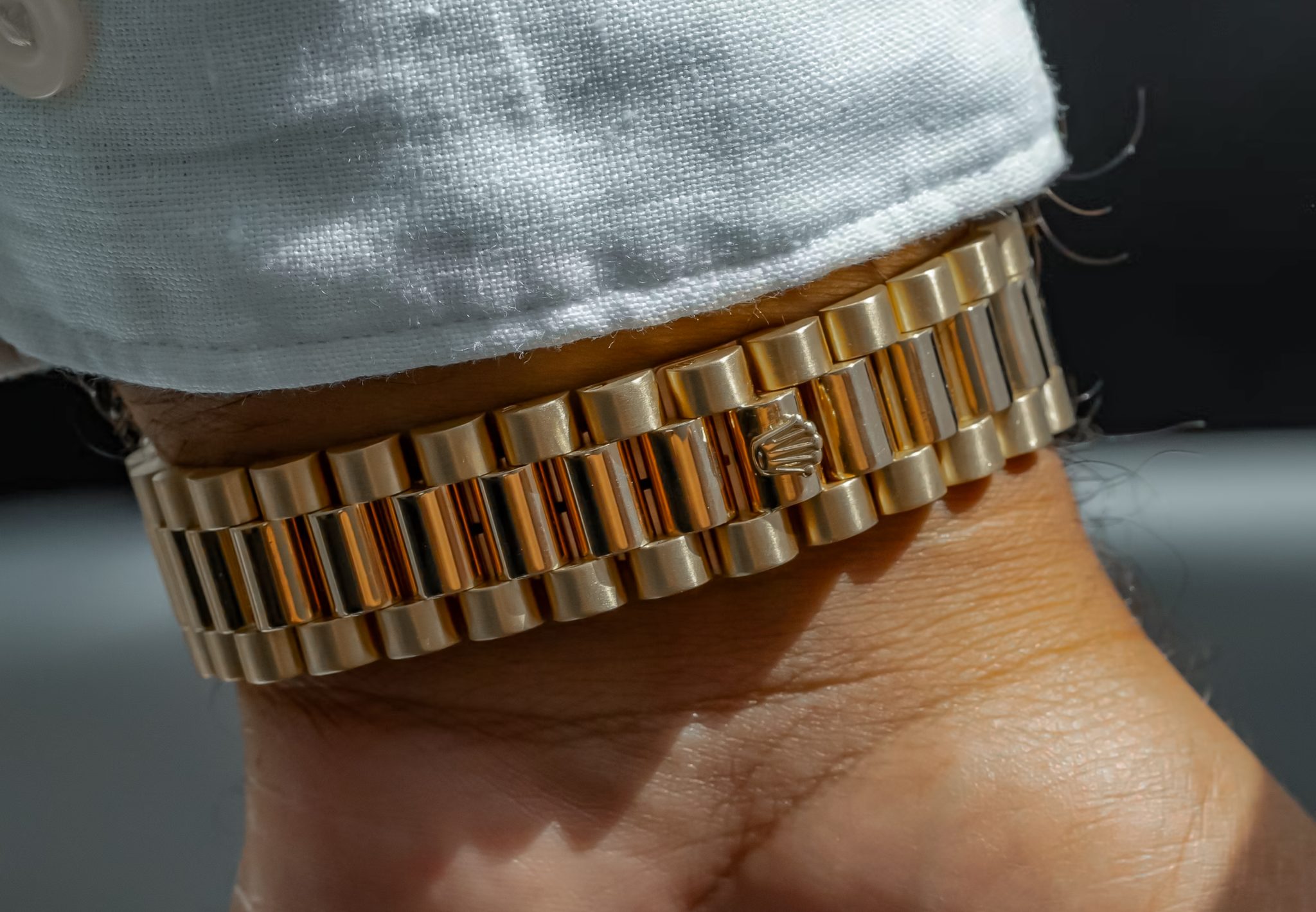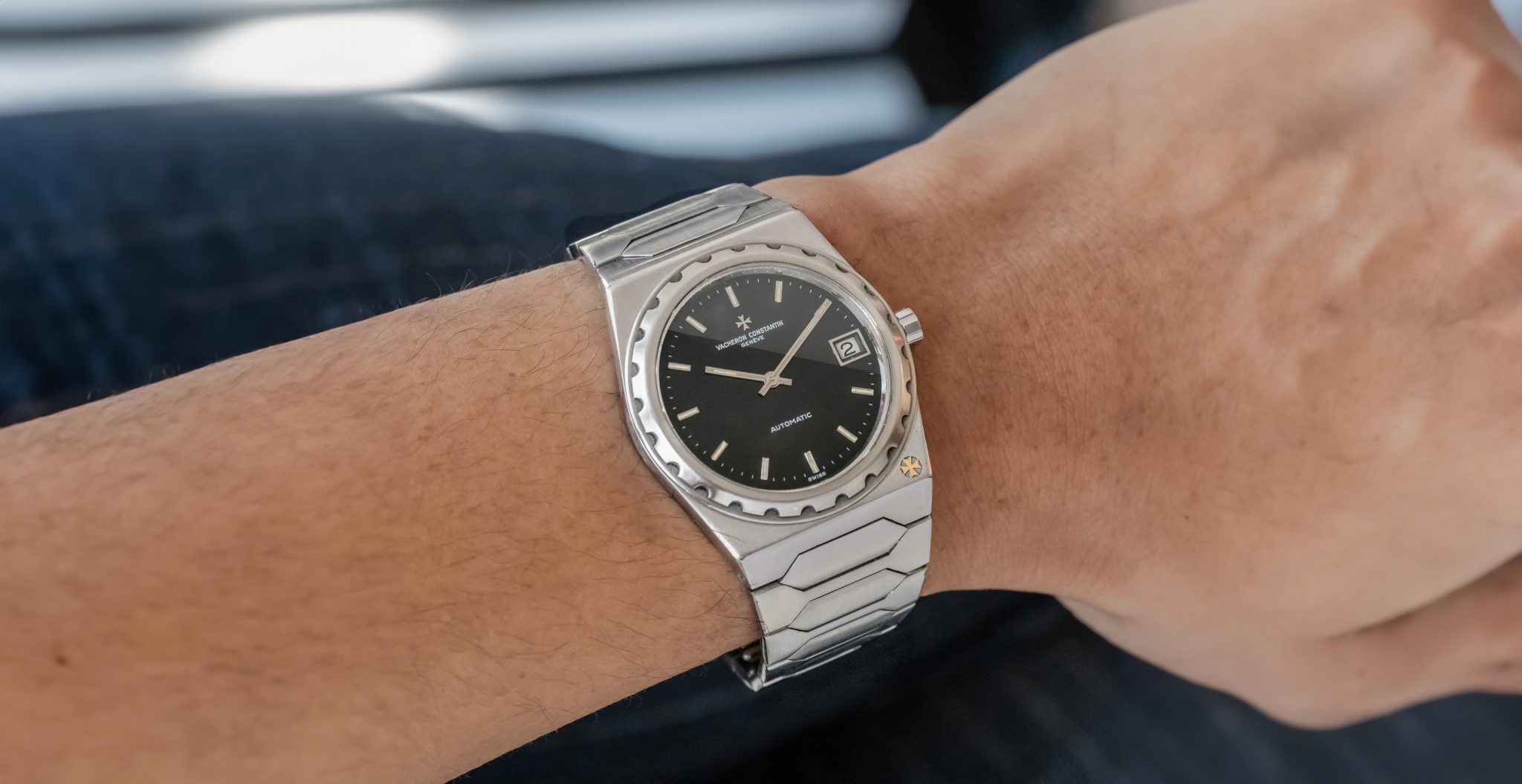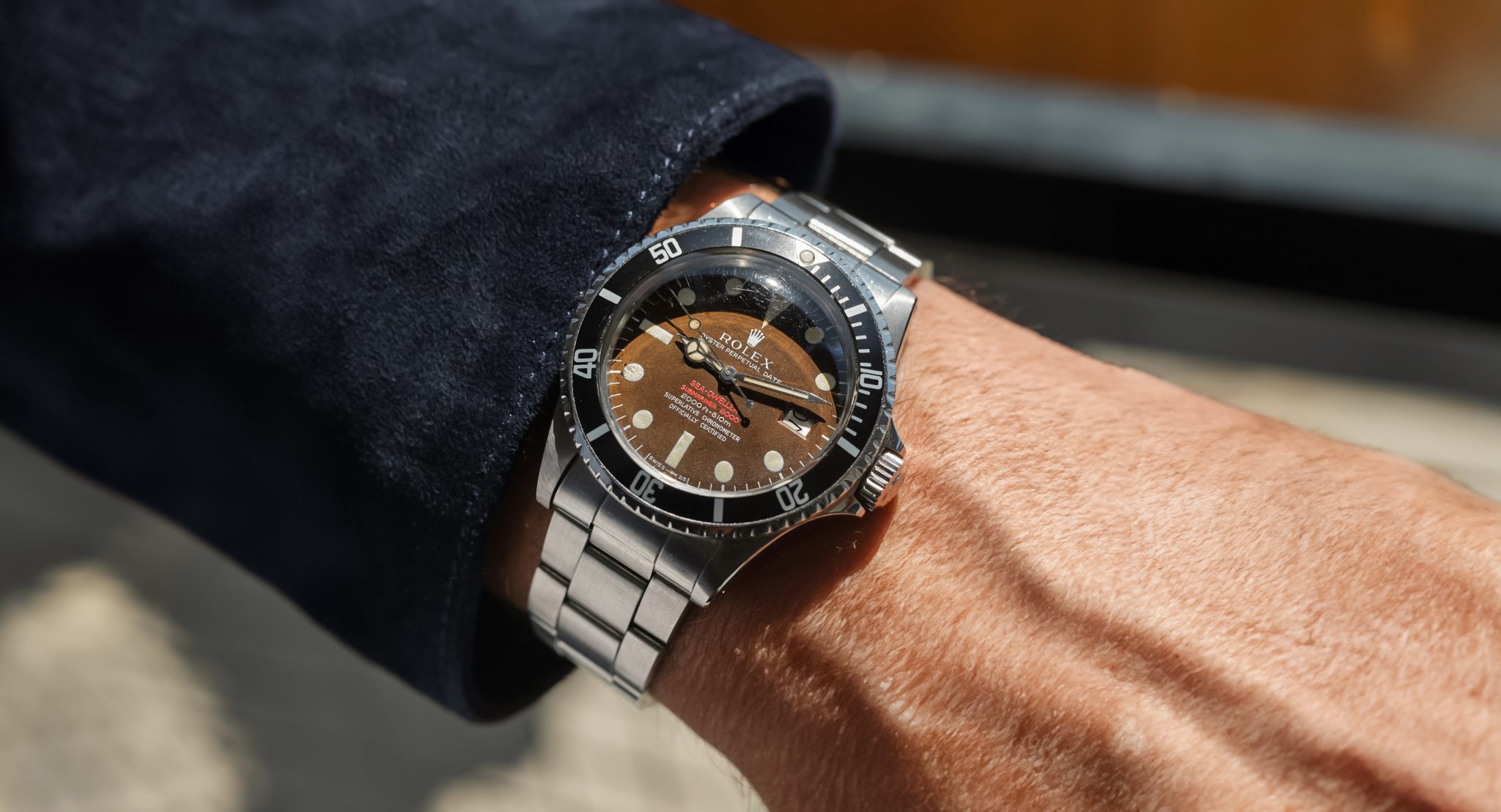
Lapis Dial 18038 Rolex Day-Date
Stone dial Rolex is having its day and I don’t think that’s for rarity alone. A stone dial gives what is ultimately a standardized product an edge of uniqueness as well as personal style. It’s kind of like ice cream, we all appreciate ice cream as a category and uniquely delicious ice cream, but everyone can kind of extrapolate personality to ice cream instinctively. Gwyneth Paltrow probably likes matcha. But I would place a bet that Eminem has never ordered matcha ice cream. Eminem would order cookies and cream, rocky road, something classic, American, and unpretentious. Ted Bundy probably liked mint chocolate chip, like all other psychopaths who enjoy eating toothpaste. Once one reaches a certain familiarity with Rolex, they can read or display just as strong a personal in their choice between a Sodalite Daytona or Jasper Datejust.

This Lapis 18038 is, undoubtedly, the equivalent of chocolate gelato. Nearly everyone likes it, it’s an absolute classic, and the Italians have fucked with it more than anyone else (I jest, they’ve probably recased no more than half of DD stone dials max). But it’s a flex, because while everyone has chocolate ice cream in their fridge, you have gelato when you’re going out. See what I’m getting at? Gordon Ramsay would have chocolate gelato. He’d also wear this, but a Lapis Datejust would be for his sous-idiot sandwich. Because Ramsay knows enough about vintage Rolex to know what’s what, given his Cream EII and 1680/8. Nothing says you’ve made it in life like a solid gold Day-Date with no dial furniture save gold aperture surrounds. This, because not only do you have a solid gold vintage Day-Date, you don’t even need to know what time it is; the world will bend to your schedule, not the other way around.

The five-digit series of Day-Dates showed up 1978 and paired the functionality of new a high-beat movement (for accuracy) with quick-set date. Visually, the recipe altered in equal measure. This was where sapphire first appeared in the Day-Date, and similarly where the dial first became flat from the 1803’s ‘pie-pan’ shape. Rolex became wildly experimental with their stone dials in this generation, far more than the 1800 generation. The lapis we see here has a deep royal blue shimmer, but also sports flecks of gold. Those gold sparkles come from pyrite that develops naturally in the stone. The fact that it happens to perfectly match this 18k gold case is a coincidence, but one Rolex likely anticipated. The harmony is so in tune that the stone looks like it was born to reside here. Gelato anyone? Maybe the Day-Date is a summer watch.

This example is in excellent overall condition. Lapis stone is extremely fragile. It is not uncommon to see significant cracks or threads running through dials. This one, though, shows nothing of the sort. The lugs are sharp, its bracelet tight. I’d wager this one spent more time in a safe than on wrist, but perhaps its next owner can remedy that. It comes as watch only from a well-regarded Dubai retailer.








